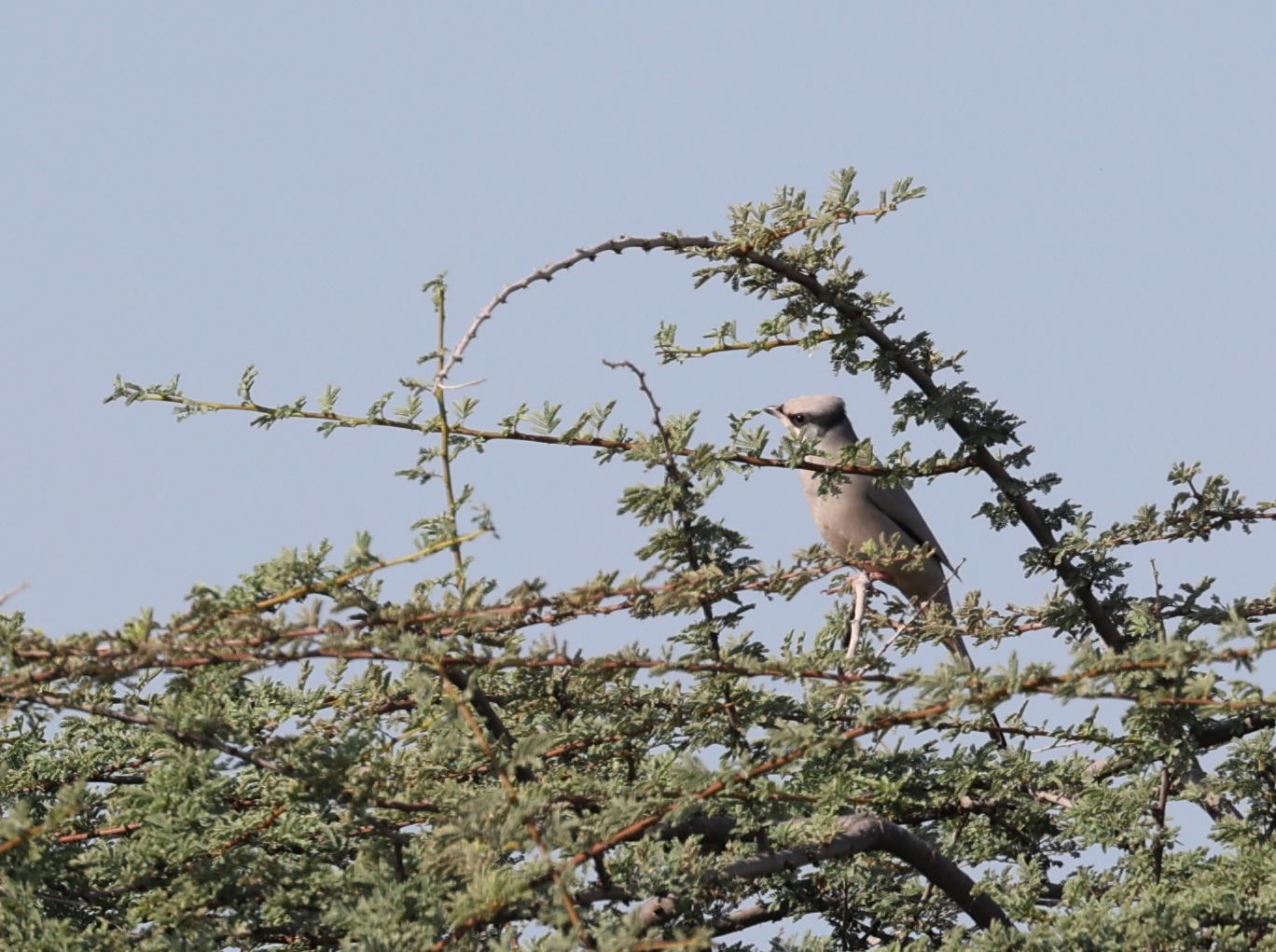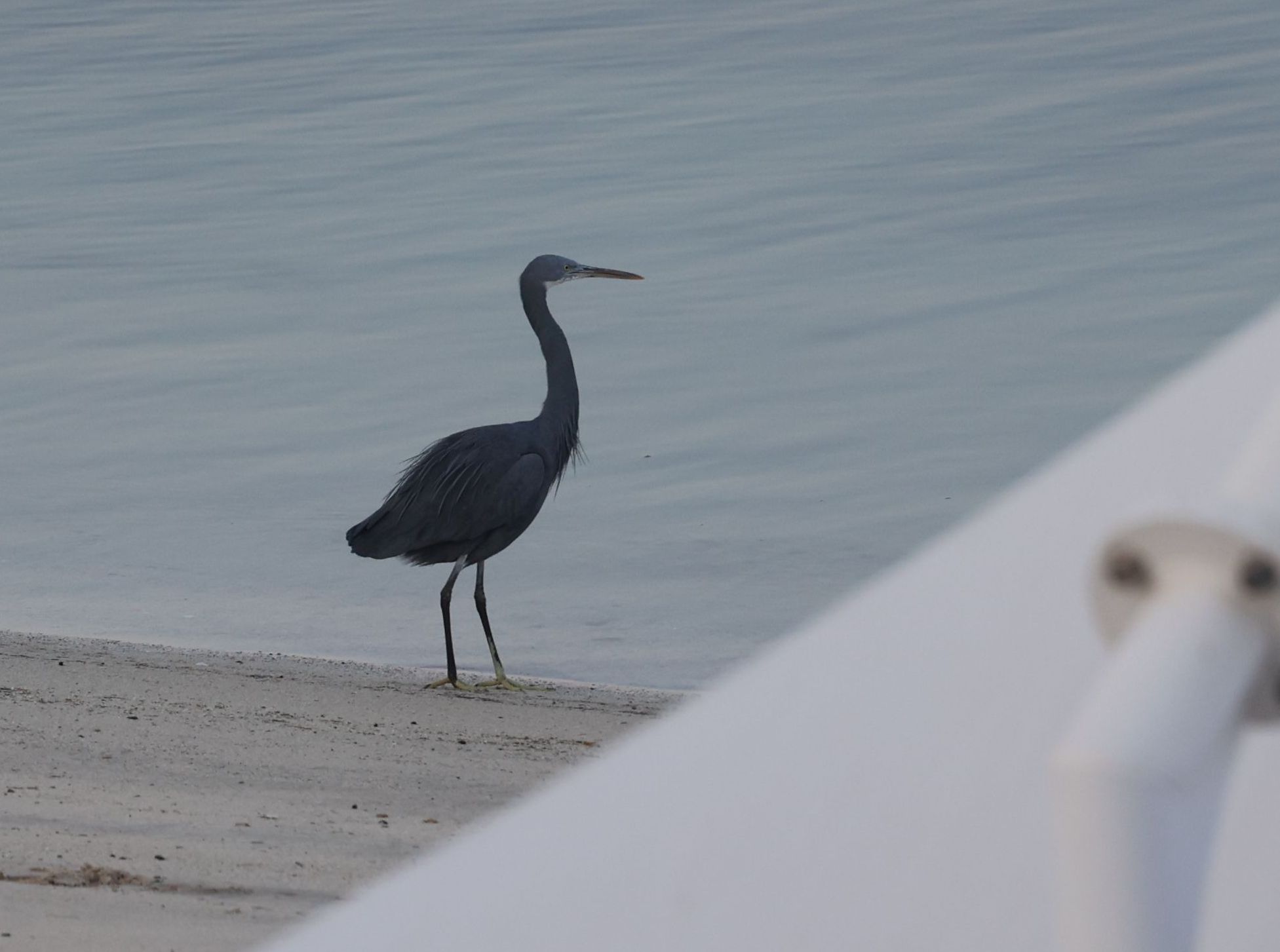Apparently the people of Dubai do not like the Flintstones. But the people of Abu Dhabi do… #dadjoke #illgetmycoat
There are around 11000 species of bird on the planet, divided into 248 families of closely-related species. Some of the families, like pigeons and doves (Columbidae), or hummingbirds (Trochilidae), comprise hundreds of species. But there are also several monotypic families – families with only one member, because they are too different from others to group. Most world-birders will never see anything like 11000 species (currently the highest total of anyone is still less than 10000) so many have taken to “family listing”. The thinking goes like this: if I can’t see all the species, maybe I can see at least a representative of each family. Sometimes it’s even more nuanced; my friend Frank has set himself the goal of seeing at east half of each family. He doesn’t have far to go – 13 species in 9 families – and along the way he has seen more than 8000 species around the world.
It is a direct consequence of family-listing that you need to target monotypic species. Birds like Plains-wanderer in the arid grasslands of south-eastern Australia (report here), or Kagu, restricted to a few forests on New Caledonia (blog here), or Bornean Bristlehead (no link here – I have twice tried and twice dipped ☹). There are 38 monotypic families, of which I have seen 17.
One such species is so obscure and otherwise uninteresting that its doesn’t even have a “common name”: it goes by its Latin or scientific name: Hypocolius. It is found in bits of north-east Africa and the Middle-east, with possibly the best place to see it being UAE. In 2013 on a stopover en route to Oxford I did 36 hours of birding. The star bird of that trip was another monotypic species, Crab Plover (report here) – but this was in July, and Hypocolius are winter visitors. I assumed with regular travel between Australia and the UK, and Dubai being the Emirates gateway to everywhere, it would only be a matter of time before an opportunity arose.
Well, it took nine years, but in late 2022 I was invited to give some computer vision research talks at the new Mohammad bin Zayed University of Artificial Intelligence (yes, they have created a University of AI) and the only mutually convenient time for me and my hosts was early December. Moreover, for a few years the best (and only regular) spot to see them in UAE has been Lulu Island in Abu Dhabi, conveniently the very same city as the University.
My visit schedule was jam packed with meetings and talks, but the day of arrival, Tuesday, had been kept clear so I could rest and/or explore, recovering for the intensity of the next few days. Normal people would of course, rest and recover, and explore shops, beaches or tourist attractions. As you know, I am not normal people.
My flight from Adelaide, via Perth, touched down at 5am, and I arrived at my plush hotel around 7.00. Thirty minutes later I was in a taxi to the marina where I hoped to get a boat over to the island.
Lulu Island is manmade, constructed reclamation between 1986 and 1992. At times since then it appears to have been ear-marked for various developments – housing, theme parks and even a “nature reserve” – but none of these has proceeded and to date remains uninhabited, sandy and sparsely vegetated. It can only be reached by private boat. The website https://www.uaebirding.com/lulu-island summarises info about finding Hypos on Lulu, and I also managed to contact Oscar Campbell, a local Abu Dhabi birder, before travelling for even more up-to-date gen. He had taken some visiting birders over there the week before and was able to confirm where the birds were hanging out, and to provide the number of a local boat company that could take me over. He was also able to reassure that there are no longer security guards patrolling to prevent trespass. I did not want my first act on arrival into UAE as the guest of a University bearing the President’s name to be getting arrested!
The boat distance across the channel to the island is only about 200m at its closest point. When birding on his own Oscar will take a kayak over, much like Mike Potter and I did for Whimbrel on another man-made island, Bird Island at Port Adelaide, during his big year (link). However I would need to engage a local boat company. At 300AED (around A$150) this worked out at nearly a dollar for every metre, crazy expensive. On the other hand, how often would I need to do this trip? And I was receiving an honorarium for my contribution at MBZUAI.
As we pulled up to the jetty I noted both Whimbrel and a crouching heron (noted at the time as Black-crowned but I’ve subsequently learned this would be exceptional for Lulu, so it was most likely Striated) on the rocks. Shortly afterwards I clocked a young Peregrine atop a mobile phone tower. But overall, inside the island as I walked to the central spot, the diversity seemed very poor. Collared Doves flushed from every tree, large numbers of White-cheeked Bulbul were conspicuous, along with smaller numbers of Red-vented Bulbul. And those classic invasive trash-birds, Common Mynah and House Sparrow were also in large numbers.
As I approached the general area Oscar had indicated, I noticed a Salvadora bush that seemed to have a lot of avian activity. From 20m away I swept my bins across its outer leaves and branches. Sparrow, sparrow, bulbul, bulbul. Wait: that one looks different. Grey, longer and sleeker, with a nice black triangle behind the eye. That’s it!!! Hypocolius, you beauty! Well, that was easy. I raised the camera to my eye for a distant record shot, but it had gone.
I spent the next 3 hours wandering around hoping to get better views. I noted a maximum of four birds but they were very hard to pin down. In the dense vegetation a few times I was able to pick out a Hypo, but these views would have made for terrible photos, so I didn’t even bother. Only once or twice did any perch out, and I was able to get some poor records shots. Mostly however – and increasingly as the day wore on and the heat and breeze both intensified – they hid in the dense salvadora bushes and I got flight views as they flushed from one bush to another if I got too close or eager trying to peer “inside”.

The only other birds of note, in amongst the ferals and fleeting Hypos, was a pair of Arabian Green Bee-eaters which posed nicely.


By midday I was hot, tired and thirsty and decided to knock it on the head. I texted the boatman to come and pick me up and grabbed some lunch in the large mall opposite the marina. Once back at the hotel I did actually rest. Success, but not euphoric success, a little anti-climactic. But I had added an entire family to my life list!
The only other birding I was able to do was over breakfast the following mornings. A Common Sandpiper decided to take advantage of the 5-star infinity pool for a quick morning bath, and a Grey Heron and a couple of Western Reef Egrets patrolled the beach. Interestingly, it was only once I put in an ebird record that I realised I had only previously ever seen Eastern Reef Egret (the one we get in Australia) so Western was an unexpected lifer. As I write this note I am already on a plane winging my way back to Oz. My family list now stands at 203. “Only” 45 to go!!


